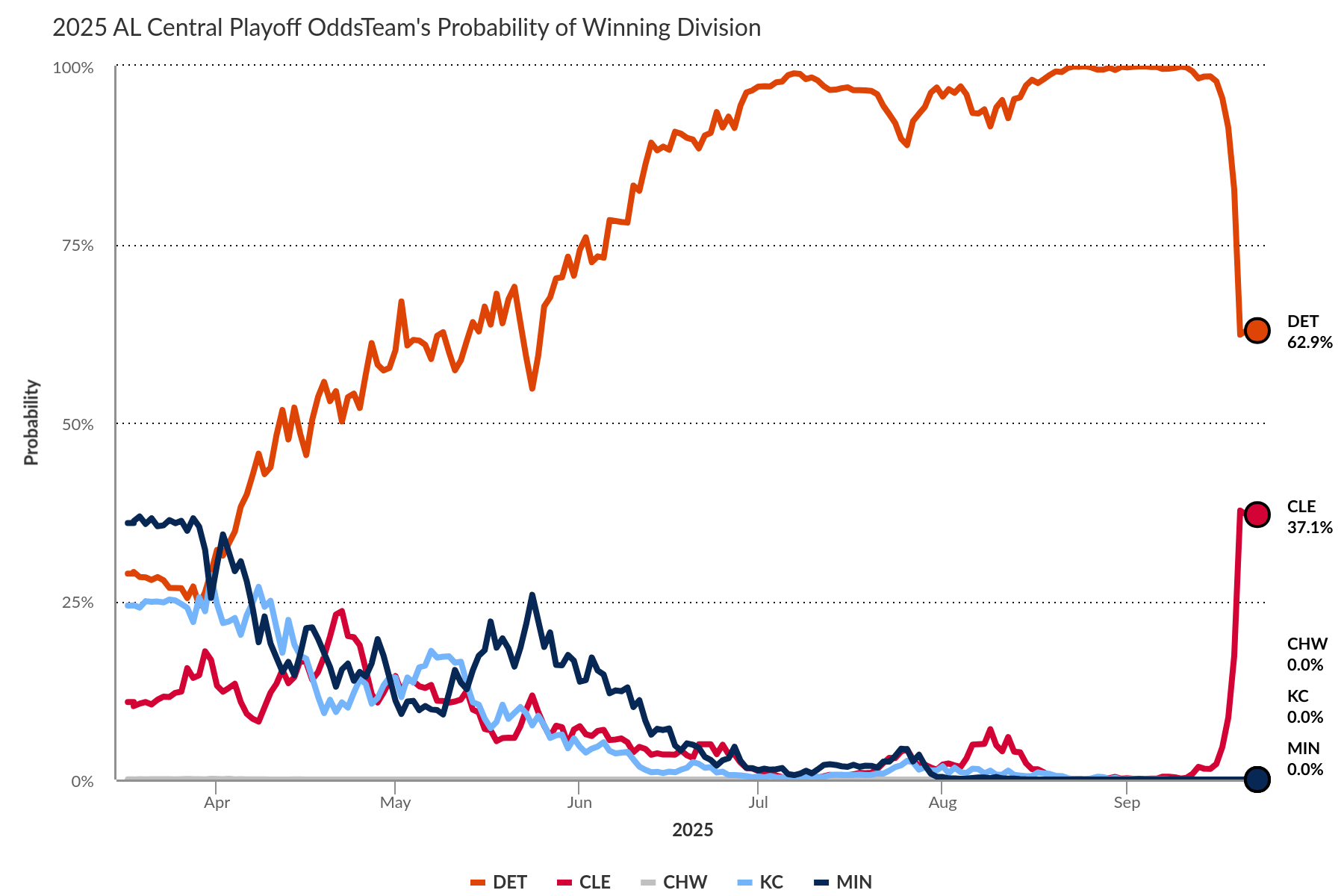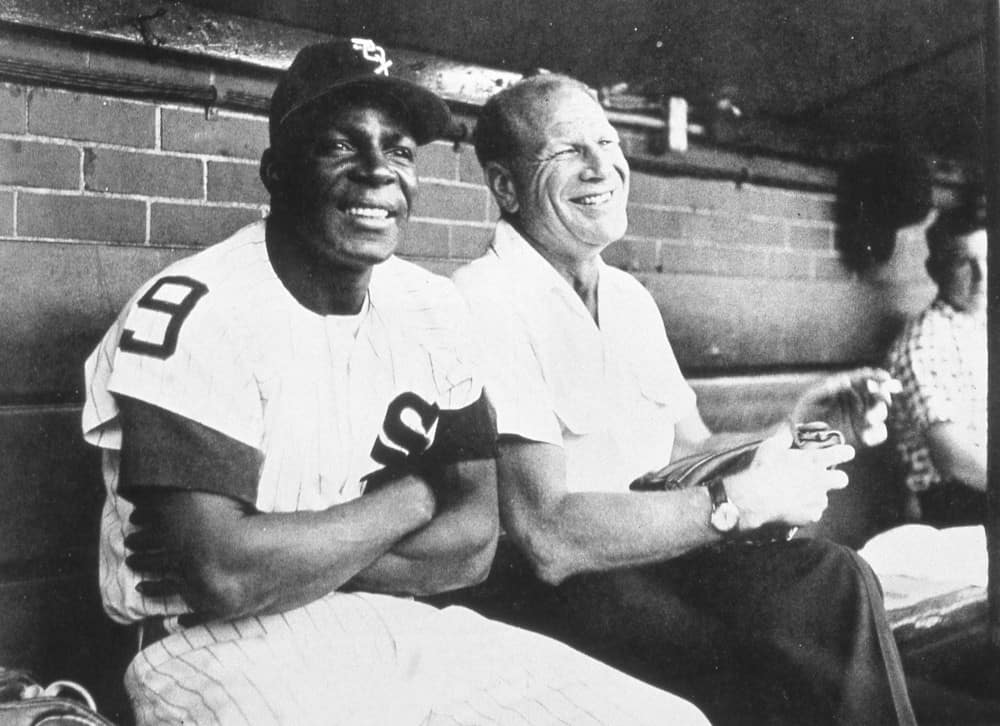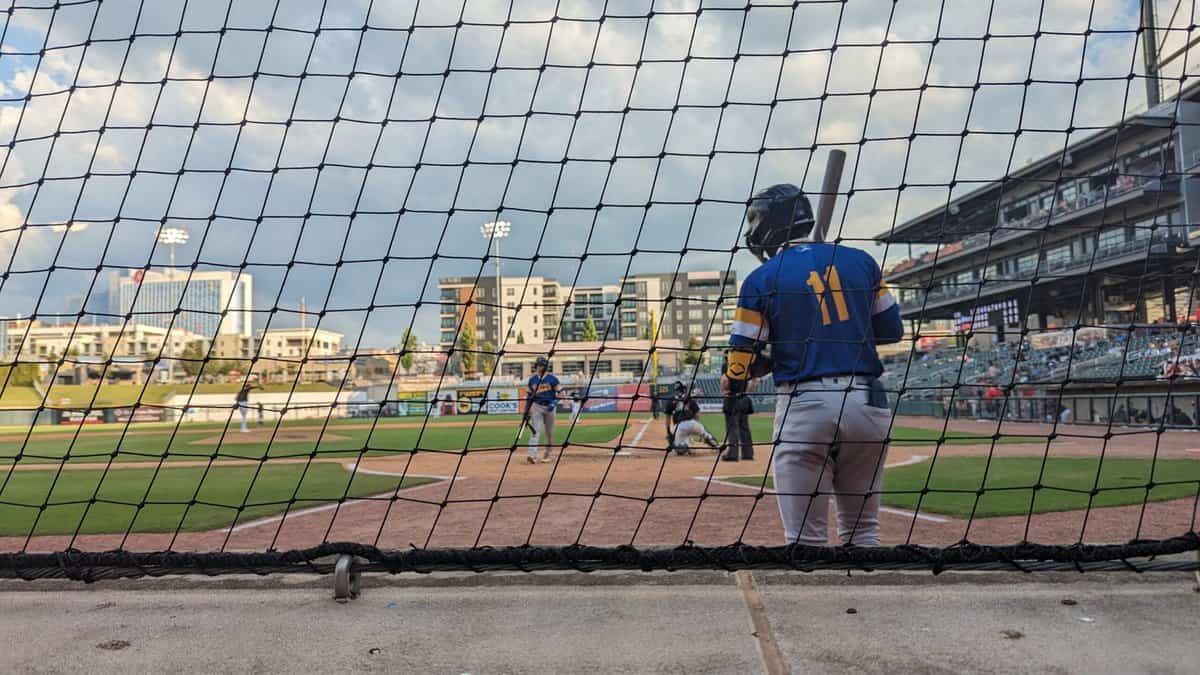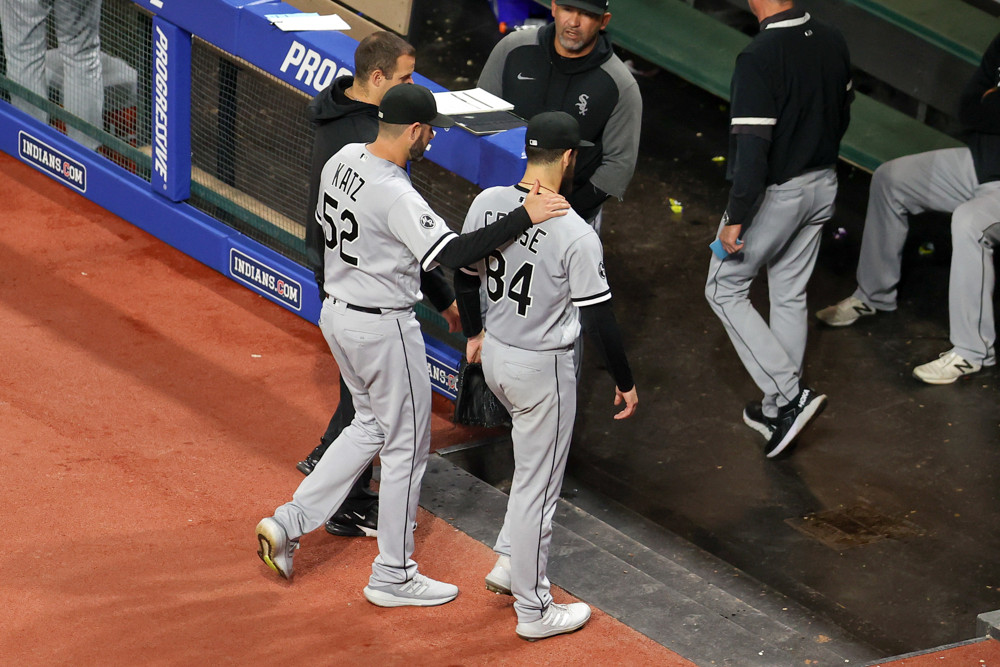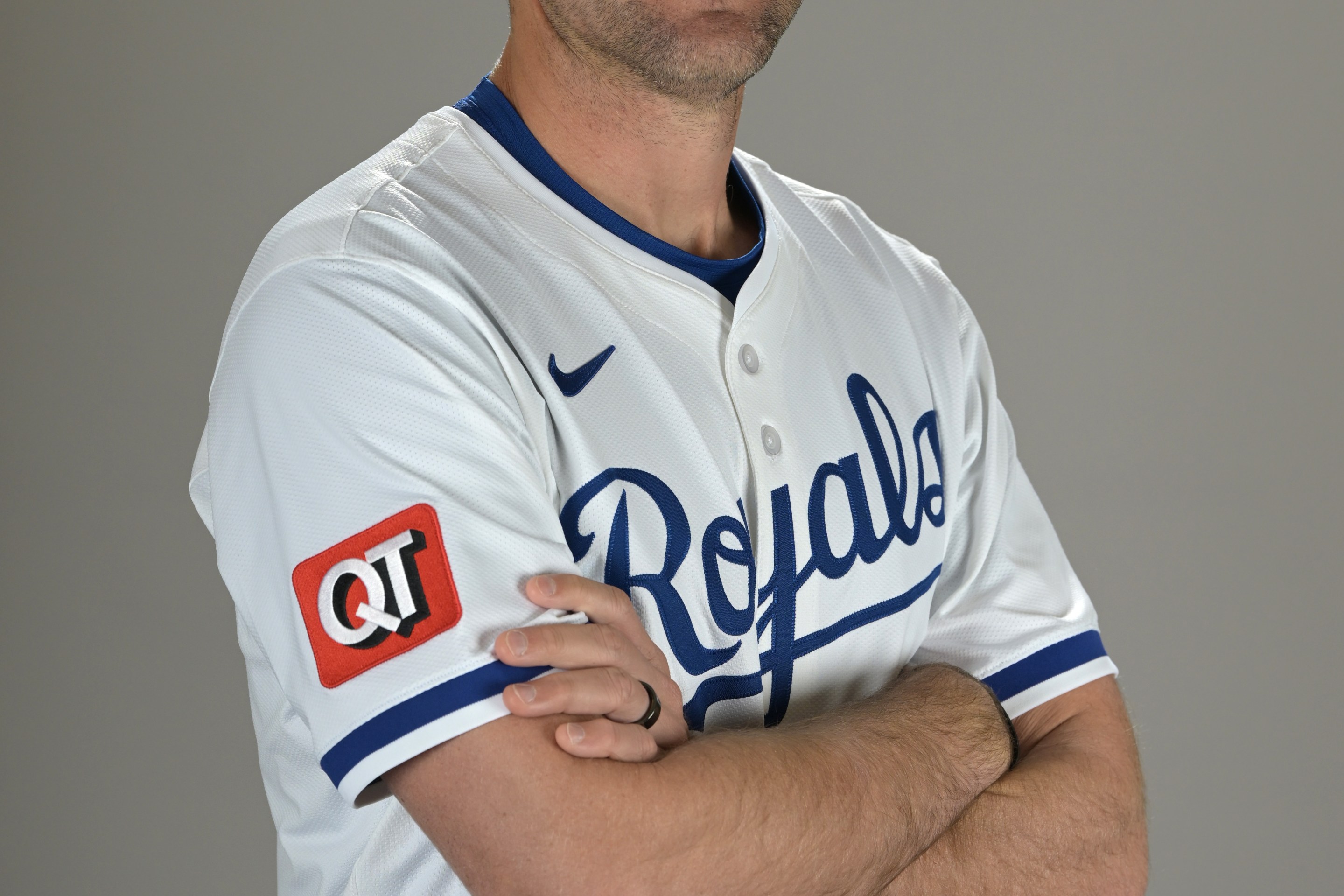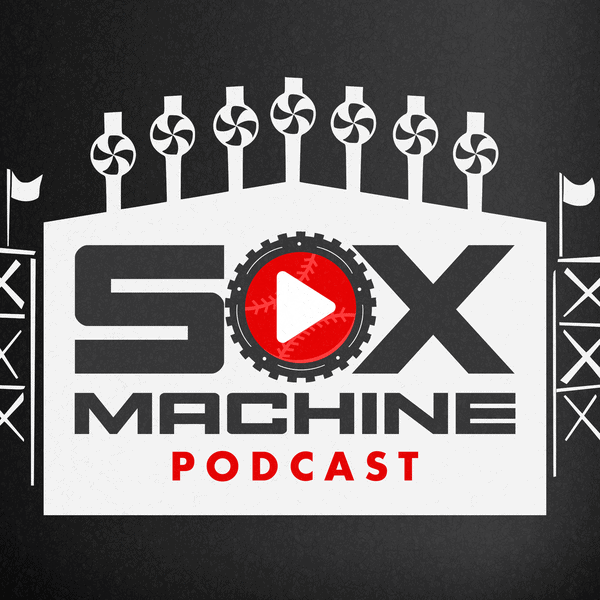When Chris Getz took over as White Sox GM, the only way he could really sell the quick turnaround Jerry Reinsdorf advertised was by pointing out the lack of juggernauts in the division.
“We're fortunate to play in the American League Central," is one thing he said. "Every year, it seems that the division is up for grabs" was another. Both sentences were thrown in Getz's face when the AL Central went on to field four winning teams and three postseason entrants in 2024, while the White Sox set the modern MLB record for losses.
Just like everything else in that cursed season, Getz suffered from the worst possible timing. It's back to normal just one year later, as the White Sox are one step closer to respectable, and the AL Central is back to producing reluctant champions.
The Tigers, who once held a 14-game lead over the next-closest team and a 15½-game lead over the Cleveland Guardians, are now a game away from losing their outright grip on first place, which they've held since late April.
In fact, they're lucky it didn't happen on Sunday. The Tigers lost to the Braves, 6-2, completing a winless six-game homestand, while the Guardians threatened to sweep the Twins, leading 2-1 head into the bottom of the sixth. But the Cleveland bullpen gave way and the Guardians suffered their own 6-2 loss, granting Detroit a temporary respite. After a mutual off day Monday, they'll meet in Cleveland on Tuesday for the start of a massive three-game series. The Guardians lead the season series 6-4, so even if the division isn't yet on the line, the tiebreaker will be, and that has its own serious implications.
Here are the scenarios in play:
- Guardians sweep: Cleveland leads Detroit by two games, but effectively three with the tiebreaker.
- Guardians win 2: Cleveland leads Detroit by one game, effectively two with tiebreaker.
- Tigers win 2: Detroit leads Cleveland by two games, but without tiebreaker.
- Tigers sweep: Detroit clinches.
It's reminiscent of what the White Sox faced in 2005, when they led Cleveland by as many as 15 games, and had a 9½-game lead on Labor Day, only to see it shrink to 1½-games before righting the ship over the last week of the season. But even then, the White Sox started September 11-10, so it's not like they were playing terribly. The then-Indians just happened to earn every game by starting the month 18-4, capping off a 28-7 stretch before the baseball gods finally decided Eric Wedge wasn't actually running an .800 team.
The Tigers, on the other hand, are crapping the bed. They're 5-13 in September, including nine losses in their last 10 games, and most recently that winless homestand. The Guardians are 16-5 in September, and are now on the doorstep of a most unlikely division title, especially considering they lost two key pitchers to a gambling investigation and traded away Shane Bieber, who would've been their in-house upgrade for the stretch.
The Tigers actually added at the deadline, but just like the Cubs with Michael Soroka, their additions were not great bets to help. They just DFA'd Charlie Morton, and Chris Paddack, who has a 6.12 ERA and just 24 strikeouts over 42⅔ innings with the Tigers, could've been a candidate for the same treatment. They likewise went the buy-low route in the bullpen, and while Rafael Montero has been fine in low leverage, neither he nor Paul Sewald have much to offer in close-and-late situations.
Kyle Finnegan is the lone exception, both in terms of his current performance (21 strikeouts, eight baserunners over 15⅓ innings) and his shape when the Tigers acquired him (healthy, performing at career norms). Contrast his situation with that of Sewald, who has been on the injured list for most of the season and now finds himself trying to get up to speed during a collapse.
The Tigers were criticized for their conservative approach to the trade deadline, and while president of baseball operations Scott Harris didn't offer a quote as instantly retractable as Carter Hawkins' plea to think about the 2032 Cubs, his defense involved the same message.
“We felt like it was a better approach for us to attack it in volume with some guys that are doing some things under the good that we really value and that are predictive of future performance,” Tigers president of baseball operations Scott Harris said. [...]
“A lot of the moves we passed on felt like moves that were going to haunt us for many years to come,” Harris said. “We felt like we have one of the best, if not the best, farm system in all of baseball. … We felt like, at this moment in time in this organization, giving up young players to chase short-term fixes is not in the best interest of the Tigers.”
Looking at these quotes now, it reads like the front office equivalent of playing for one run, which analytically inclined decision-makers tend to reject under most circumstances. If the Guardians end up prying the Tigers' fingers off the cliff, Harris will be haunted in a way he couldn't have envisioned. FanGraphs gave the Tigers a 99.9 percent probability of winning the division as recently as Sept. 10. Now they're the reason why such models don't use 100 percent until the clinching's done.
Regardless of which way the division teeters, the White Sox can claim a supporting role in the drama. The Guardians wouldn't be in this position if they didn't win 11 of 13 games against the White Sox, and the Tigers would have more breathing room if they went better than 8-5, including a series loss at Comerica Park this month.
Attendance matters
The White Sox not only rebounded in the actual standings, but they also distanced themselves from rock bottom with regards to attendance. With all 81 home dates in the books, the Sox finished with 1,445,738 tickets sold for the season, an improvement of 65,005 from 2024, or 803 fans per game. There's still a long way to go before the White Sox can point to in-person support as a reason for investing in the roster, but considering attendance can lag a year behind team performance, further decline was possible. The decision to shore up the schedule with giveaways celebrating 125 years of White Sox baseball helped reverse the flow.
The idea of the one-year lag is creating concerns in Minnesota, though. The Twins wrapped up their home schedule and finished with a total of 1,768,728 fans over 81 games, which is a new low for the Target Field era. Unlike the White Sox, they're generating zero excitement for 2026, too. They're 20-40 in the second half, including a 5-15 September. Both marks are the worst in baseball, which has Aaron Gleeman bracing for Target Field turning into a ghost town in 2026.
As bad as the Twins’ attendance was this season, and as far as it plunged following the roster-gutting trade deadline, the full weight of a horrendous 2025 and righteous fan frustration will be felt in 2026. Retaining existing season ticket holders will be difficult. Adding new ones? Good luck. [...]
This is what happens when payroll is slashed after the first playoff success in two decades. This is what happens when a second-half collapse one year becomes 90-plus losses the next. This is what happens when the lame-duck owners decide to keep running the team into the ground instead of selling.
